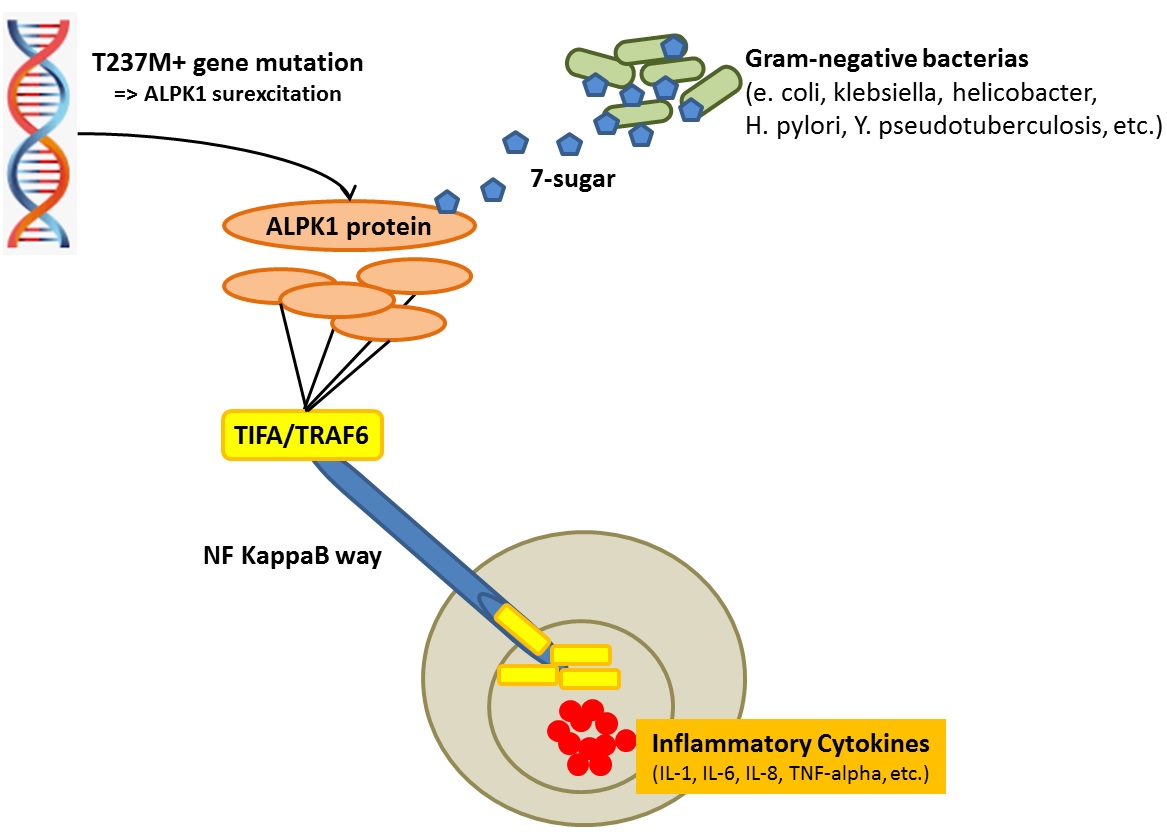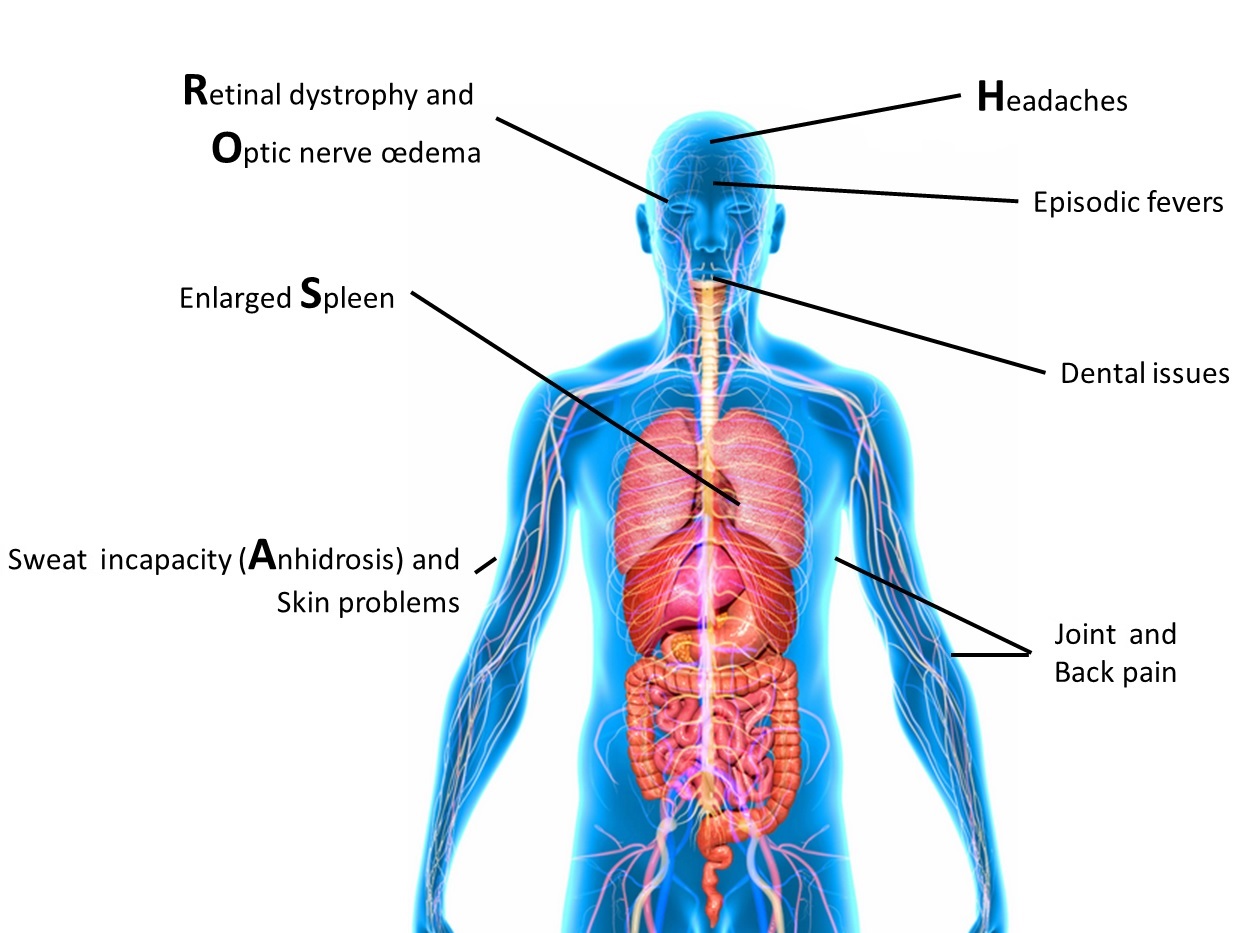It is a new and very rare genetic disorder
characterized by:
Retinal dystrophy,
Optic nerve edema,
Splenomegaly,
Anhidrosis and migraine
Headache.
It belongs to the autoinflammatory diseases, those diseases cause
errors in the innate immune system.
Innate immune system is the first defense of our immune system. It
is a non-specific response but very powerful against the pathogen
agents. It is a double edged sword, it protects the body against the
external world, but it can also sometimes damage the body.
ROSAH Syndrome was documented for the first time in 2012 and has
been officialized in 2019 thanks to genetic doctors. Because of this
discovery, ROSAH patients will be no longer lost in their diagnosis
and no longer seen as a puzzle by their doctors.
We can now fit the puzzle pieces together.
No effective treatment exists for the moment, but we are now
hopeful!
ROSAH Syndrome
Foundation
What is ROSAH syndrome?
See more... (scroll down)
ROSAH Syndrome
Foundation
What is the cause?
This condition is caused by a
mutation in the alpha-kinase gene (ALPK1). This gene is located on
the long arm of chromosome 4 (4q25). The inheritance of this
condition is autosomal dominant. It means that if you have this
mutation, you have got a 50% chance to pass it on to your
children. You can inherit the mutation from one of your
parents. This mutation can affect either girls or boys.
The main function of ALPK1 gene is to produce a protein also named ALPK1 that is an alert launcher to the innate immune system when it detects a gram negative bacteria. We live in a world full of bacteria and, in most of cases, the human body is used to living with them. We have bacteria in our bowel (10,000,000,000) in our nose, on our skin, our mouth, and throughout our body. With ROSAH Syndrome, ALPK1 protein is sur-excited and causes inflammation.
The main function of ALPK1 gene is to produce a protein also named ALPK1 that is an alert launcher to the innate immune system when it detects a gram negative bacteria. We live in a world full of bacteria and, in most of cases, the human body is used to living with them. We have bacteria in our bowel (10,000,000,000) in our nose, on our skin, our mouth, and throughout our body. With ROSAH Syndrome, ALPK1 protein is sur-excited and causes inflammation.

See more... (scroll down)
ROSAH Syndrome
Foundation
What are the symptoms?
The main characteristics of the
condition are: Eye issues (Retinal dystrophy, Optic nerve oedema),
Splenomegaly, sweat incapacity (Anhidrosis) and migraine Headache.
Other features include:
- Other eye issues (ocular inflammation, retinal detachment, posterior vitreous detachment, peripapillary flame hemorrhages),
- pancytopenia,
- episodic fevers,
- dental issues,
- skin problems,
- joint pain,
- tiredness,
- mild renal impairment.
The most disabling symptom is the eye issues (blindess). We don’t know why some patients have serious eye issues and others don’t, even within the same family! Maybe knowing why could save someone’s vision.
One day we will be able to repair the retina, but until that moment, most vision that is lost is not reversible. So it is a race against time, most of all for our children. We need an effective treatment to prevent losing vision and keep the vision that we have.
Other features include:
- Other eye issues (ocular inflammation, retinal detachment, posterior vitreous detachment, peripapillary flame hemorrhages),
- pancytopenia,
- episodic fevers,
- dental issues,
- skin problems,
- joint pain,
- tiredness,
- mild renal impairment.
The most disabling symptom is the eye issues (blindess). We don’t know why some patients have serious eye issues and others don’t, even within the same family! Maybe knowing why could save someone’s vision.
One day we will be able to repair the retina, but until that moment, most vision that is lost is not reversible. So it is a race against time, most of all for our children. We need an effective treatment to prevent losing vision and keep the vision that we have.

See more... (scroll down)
ROSAH Syndrome
Foundation
Watch this new video :

